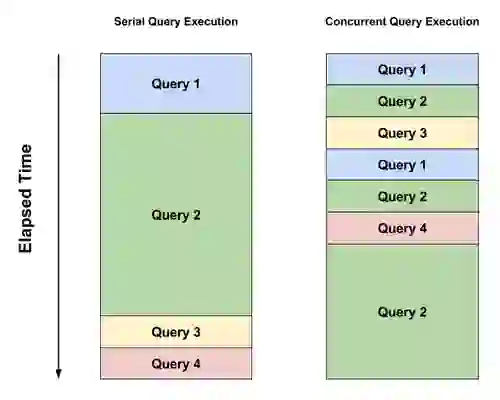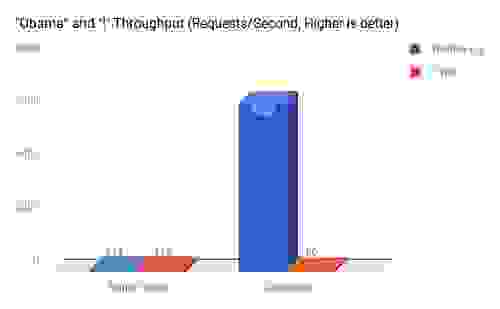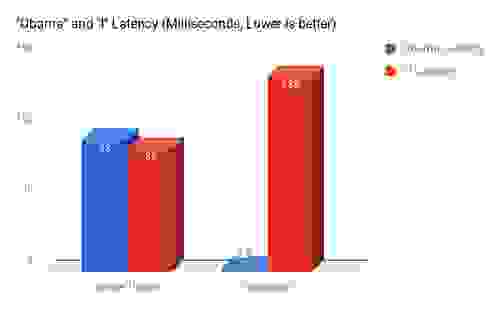
Redis has been, from its inception, single threaded. This is a reality that Redis apps, and more recently Redis Modules such as RediSearch , have to work with.
While keeping things single-threaded makes Redis simple and fast, the downside is that long running commands block the entire server for the duration of query execution. Most Redis commands are fast so that is not a problem, but commands like ZUNIONSTORE, LRANGE, SINTER and of course, the infamous KEYS, can block Redis for seconds or minutes, depending on the size of data they are handling.
RediSearch is a new search engine module written at Redis. It leverages Redis’ powerful infrastructure with efficient data structures, to create a fast and feature rich, real-time search engine.
While it is extremely fast and uses highly optimized data structures and algorithms, it faces concurrency challenges. Depending on the size of your dataset and the cardinality of search queries, they can take anywhere between a few microseconds, to hundreds of milliseconds to seconds in extreme cases. And when that happens, the entire Redis server that the engine is running on, is blocked.
Think, for example, of a full-text query intersecting the terms “hello” and “world”, each with a million entries, and half a million common intersection points. To do that in a millisecond, you would have to scan, intersect and rank each result in one nanosecond, which is impossible with current hardware. The same applies when indexing a 1000 word document. It blocks Redis entirely for that duration.
So search queries could behave very differently from your average Redis O(1) command, in that they could block the entire server for long periods of time. Of course, you could and should split your search index into a cluster, and a cluster version of RediSearch will soon be available as part of Redis Enterprise – but even if we distribute the data across cluster nodes, some queries could be slow.
Luckily, Salvatore Sanfilippo has added a revolutionary change just near the finish line of Redis 4.0 and the release of the modules API : Thread Safe Contexts and the Global Lock.
The idea is simple. While Redis still remains single threaded, a module can run many threads. Any one of these threads can acquire the Global Lock when it needs to access Redis data, operate on it, and release it.
We still cannot really query Redis in parallel. Only one thread can acquire the lock, including the Redis main thread, but we can make sure that a long running query will give other queries time to properly run by yielding this lock from time to time (This limitation applies to this specific use case only – in other use cases such as training machine learning models, actual parallel processing the background is achievable and easy).
Up until now, the flow of a search query was simple: the query arrives at a Command Handler callback in the Redis Module, and it would be the only thing running inside Redis. Then it would parse the query, execute it, taking as long as it needs and return the result.
To allow concurrency, we adopted the following design:
Thus the operating system’s scheduler makes sure all query threads get CPU time to run. While one is running the rest wait idly, but since execution is yielded about 5,000 times a second, it creates the effect of concurrency. Fast queries will finish in one go without yielding execution, slow ones will take many iteration to finish, but will allow other queries to run concurrently.

The same approach is applied to indexing. If a document is so big that tokenizing and indexing it will block Redis for a long time – we break it into many smaller iterations and allow Redis to do other things instead of blocking for a very long time. In fact, in the case of indexing, there is enough work to be done in parallel using multiple cores, namely tokenizing and normalizing the document. This is especially effective for very big documents.
As a side note, this could have been implemented with a single thread switching between all the query execution loops, but the code refactoring required for that was much larger, and the effect with reasonable load would have remained similar, so we opted to keep this for a future release.
While this is not magic, and if all your queries are slow they will remain slow, and no real parallel processing is done here – this is revolutionary in Redis terms. Think about the old problem of running KEYS * in a busy Redis instance. In single threaded operation, this will cause the instance to hang for seconds if not minutes. Now it is possible to implement a concurrent version of KEYS in a module, that will hardly affect performance. In fact, Salvatore has already implemented one!
There is, however, a negative effect as well: we sacrifice atomicity of reads and writes for concurrency to a degree. Consider the following situation: One thread is processing a query that should retrieve document A, then yields the execution context; At the same time, another thread deletes or changes document A. The result – the query run by the first thread will not be able to retrieve the document, as it has already been changed or deleted while the thread was “asleep”.
This is of course only relevant to high update/delete loads, and relatively slow and complex queries. In our view, for most use cases this is a sacrifice worth making, and usually query processing is fast enough that the probability of this happening is very low.
However, if needed, this can be overcome quite easily: if strong atomicity of the operations is important, it is possible to have RediSearch operate in “safe mode”, making all searches and updates atomic, thus making sure that each query refers to the sate of the index at the moment of its invocation.
To enable safe mode and disable query concurrency, you can configure RediSearch at load time: redis-server --loadmodule redisearch.so SAFEMODE in command line, or by adding loadmodule redisearch.so SAFEMODE to your redis.conf – depending on how you load the module.
I’ve benchmarked both versions of the module – simple single threaded, and concurrent multi threaded, over the same set up.
1. The dataset consists of about 1,000,000 Reddit comments.
2. Two clients using Redis benchmark were running – first separately, then in parallel:
3. One client doing a very intensive query – “i” which has 200,000 results with 5 concurrent connections.
4. One client is doing a very light query – “Obama”, which has about 500 results – with 10 concurrent connections (we assume in a normal situation there will be more lightweight queries than heavy queries).
5. Both clients and the server running on my personal laptop – MacBook Pro with an Intel Quad Core i7 @ 2.2Ghz.


This little Global Lock feature and Thread Safe Contexts, is perhaps the most powerful thing that the Modules API offers. We touched only the problem of concurrency here, but it also enables background tasks, real parallel processing of data that does not touch the Redis keyspace, and more.
For RediSearch, it makes the difference between being a nice engine for small-ish use cases, to being a real beast that can handle huge data-sets at high loads. Combined with the up-and-coming distributed version of RediSearch (that also leverages the threading API, but that’s a story for another post), it will make RediSearch a very powerful search and indexing engine.